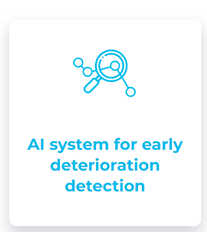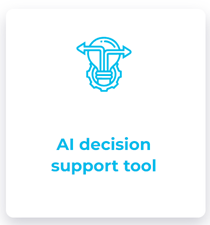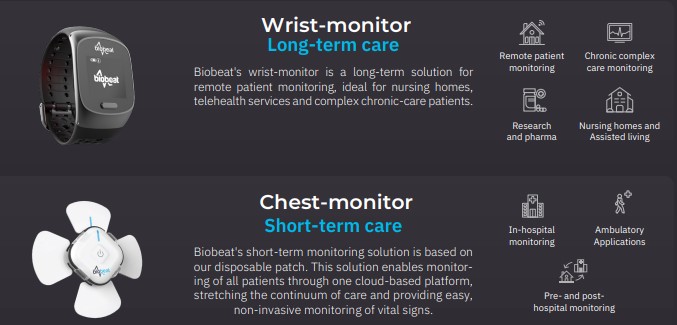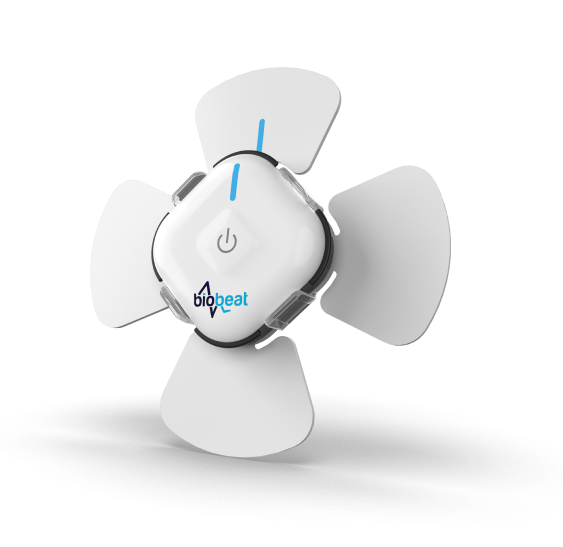- Why Remote Patient Monitoring (RPM) is the New Telemetry
- How has telemetry traditionally been implemented?
- Telemetry in cardiac care in hospitals today
- How is cardiac telemetry conducted in hospitals?
- Overuse of telemetry in hospitals
- What is Remote Patient Monitoring?
- In what way is RPM more advantageous to doctors and patients than Telemonitoring?
- The unique benefits of Remote Patient Monitoring
- Choosing the right RPM
- Biobeat – The next generation of Remote Patient Monitoring
- Biobeat Unique Benefits
- Conclusion
Why Remote Patient Monitoring (RPM) is the New Telemetry
Telemetry is the local collection of measurements (or other data) at remote points, and their automatic transmission to receiving equipment for monitoring. The word is derived from the Greek roots tele, “remote”, and metron, “measure”.”
Telemetry allows for the monitoring of multiple parameters, which in the medical world can include blood pressure, temperature, motor activity and ECG.
In order for telemetry to work, it requires the following three general components:
1. A sensor: to measure physical data (e.g., pressure) and electrical data (e.g., current)
2. A transmission path: such as wireless, wired or a hybrid medium
3. A display, recording or control device
How has telemetry traditionally been implemented?
Telemetry is really nothing new.
Telemetric cardiac monitoring was invented in 1949 by Norman J Holter. Its clinical use started in the early 1960s, with traditional telemetry typically requiring surgery, which made it an invasive procedure. The surgery would include all the usual suspects, such as anesthesia, the implantation of a transmitter, and the presence of a medical team both during the operation and for post-operative care.
Telemetry in cardiac care in hospitals today
Since the sixties we’ve come a long way in reducing invasive care. Today, Telemetric units in hospitals, especially in cardiac units, rely less on invasive care, but still require the patient to be hooked up to an enormous amount of constrictive equipment, causing the patient to be admitted in order to be observed.
Cardiac telemetry may be recommended in hospitals and is often recommended for reasons such as:
- Abnormal heart rhythms (arrhythmias such as atrial fibrillation)
- Chest pain with an unstable heart rhythm
- Monitoring to coordinate with heart procedures such as cardioversion, which corrects abnormal heart rhythms
- Monitoring before or after open heart surgery
How is cardiac telemetry conducted in hospitals?
Usually, in a cardiac telemetry unit, a trained nurse will apply a variety of sensors to the body such as:
- Blood pressure cuff on the arm to frequently monitor blood pressure
- Oxygen monitor (pulse oximeter) on the finger to measure the amount of oxygen in your blood
- EKG (electrocardiogram, or ECG) leads on the chest to monitor heart rate and rhythm
The blood pressure cuff will inflate periodically, and the other leads will transmit data silently to a monitor in both the patients and the telemetry nurse’s room. It’s important to note that a cardiac telemetry unit is very much like any other hospital department. Patients will also be attached to an intravenous (IV) support and receive the same level of nursing care as people in other departments.
Overuse of Telemetry monitoring in hospitals
Telemetry requires many resources. As a result, there is now a large conscious movement towards the reduction of overuse of telemetry in today’s hospitals. Efforts are being made to educate hospital staff on the decision-making processes made to telemetry patient eligibility, largely in order to reduce the healthcare-associated costs related with them.
Remote Patient Monitoring removes the constraints of traditional telemetry, slashing costs and freeing up the resources involved.
What is Remote Patient Monitoring?
Remote Patient Monitoring is the digital capture and electronic transmission of vital health data from patient to healthcare provider, enabling continuous remote assessment, accurate data-based medical advice, and instruction.
In what way is RPM more advantageous to doctors and patients than Telemonitoring?
Implementing RPM includes the following six steps:
|
Step 1 |
Step 2 |
Step 3 |
Step 4 |
Step 5 |
Step 6 |
|
The healthcare provider assesses the patient and determines their suitability for a remote patient monitoring program. |
The healthcare provider offers RPM, receives patient permission, and orders or prescribes RPM to the patient. |
The patient is provided with an RPM device to collect vitals and general health data. The device is electronically connected either via Bluetooth or cellular network. |
The patient wears the device at home and data such as blood pressure and heart rate, saturation is automatically and continuously monitored and recorded. |
The device transmits all the relevant data to the healthcare provider digitally and electronically. |
The healthcare provider analyzes the received data and provides the patient with the relevant health and wellness guidance and instructions. Occasionally, the RPM system can also help with analysis. |
Remote Patient Monitoring can do everything that Telemetry units can do, but without the patient having to be admitted to the hospital, saving on hospital beds, human resources and ultimately, healthcare budgets.
The unique benefits of Remote Patient Monitoring
RPM enables providers to reduce stress on hospitals, minimize mass infection of other patients and health care providers, and keep a close eye on patients able to stay at home.
Benefits include:
- Patient and doctor ability to monitor key vital signs and symptoms as they improve/ deteriorate
- Developing symptom monitoring such as cough, shortness of breath
- Real time decision making of whether the patient should stay home or go to the hospital.
Choosing the right RPM
So, we’ve established that RPM is extremely cost effective due to its ability to increase savings and revenues for healthcare providers. With regards to capital and operational costs, it really depends on the system.
When choosing a vendor, practitioners and healthcare providers will want to make sure that they choose a vendor that can offer them all the services they need – and not just the device. A good vendor will provide a fully comprehensive solution that will include a device, an application or software that’s intuitive and easy to work with and of course, support.
Biobeat – The next generation of Remote Patient Monitoring
Biobeat is a leading Remote Patient Monitoring provider. Our remote patient monitoring platform is the next generation of Health AI, measuring vital signs in real-time and using wireless, non-invasive medical-grade technology and Machine Learning in order to provide actionable insights on patient care.
The platform includes everything healthcare providers and practitioners need to effectively and efficiently monitor their patients:
With the Biobeat Remote Patient Monitoring platform, its simple to:
Biobeat Unique Benefits
With Biobeat, healthcare practitioners can measure a diverse range of health parameters with just one device. That’s because this unique system collects millions of data-points per patient per day. This is enabled through proprietary data collection tools, via either a wrist-monitor or chest-monitor. Both devices are based on our PPG sensor, which is developed in-house and patented globally.
Each of these devices is able to automatically measure thirteen vital signs, continuously, wirelessly and in real time:
Biobeat benefits are clear and far-reaching, benefiting patients, practictioners and healthcare facilities, saving time, improving health and wellbeing and significantly lowering costs:
Conclusion
We can thereby conclude that Remote Patient Monitoring does everything that telemetry units do (and more), minus the need for admissions – leading to massive savings on every kind of healthcare budget and resource.
For more information on Biobeat RPM technology, devices, applications, and systems and a live demo, contact: info@bio-beat.cloud










